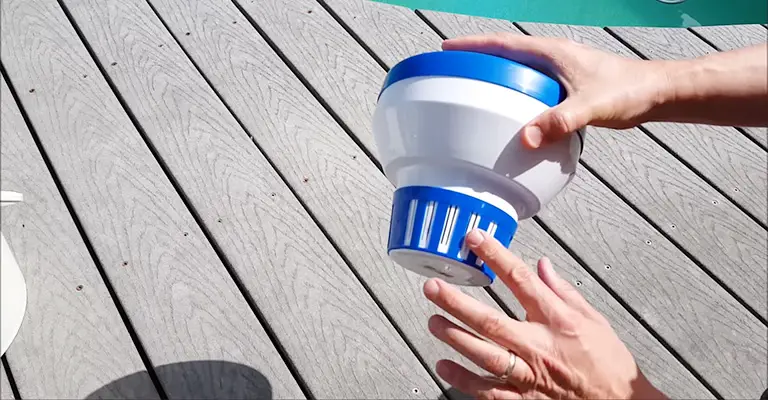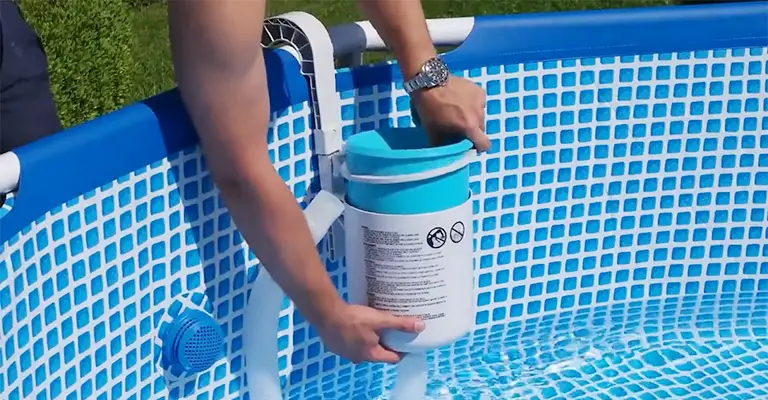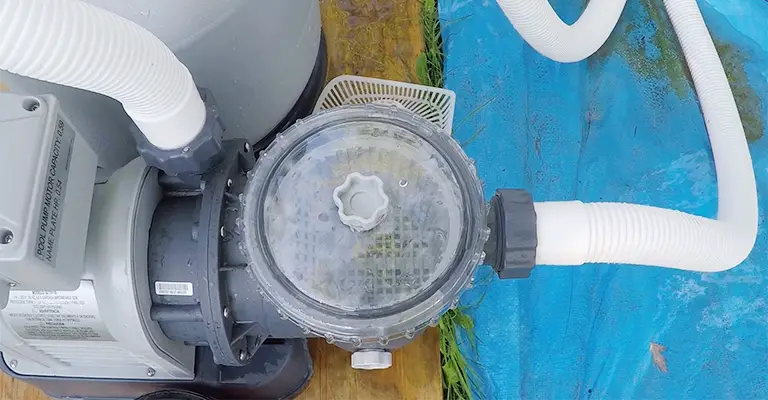When it comes to pool sanitization, chlorine is the most popular chemical. It is available in tablet, granule, and stick forms. Because chlorine tablets are easy to use, they are the most commonly used sanitizers in pools.
Chlorine tabs release chlorine slowly into your water as they dissolve and slowly dissolve. But where should you apply your chlorine tabs in your pool? You might be looking for the answers below.
If you have a skimmer, floating dispenser, or automatic chlorinator, you should always add chlorine tablets to it. If you are using a floating dispenser, you can add the chlorine tablets directly to the dispenser.
If you are using a skimmer, you can add the chlorine tablets to the skimmer basket. If you are using a chlorinator, you can add the chlorine tablets to the chlorinator.
Chlorine Tablets In Automatic Chlorinator
You should use an automatic chlorinator if you want to chlorinate your pool effectively. In the chlorinator, simply place the chlorine tablets and set the level of chlorine to what you need. There will be a precise release of product into the water.
You pay for the equipment, but it gives you total control over the chlorine you use. Compared to regular floating dispensers, you might also save product.
Chlorine Tablets In Floating Dispenser

A floating dispenser, which is also referred to as a chlorine diffuser, is another method that is easy to use. It only takes a few minutes to add the tabs into the dispenser and let it float around the pool.
As the tablets dissolve, chlorine will be released into your water. In some cases, it may get stuck in one spot, causing uneven chlorine distribution.
Chlorine Tablets In Skimmer

You can easily and conveniently dispense chlorine from your skimmer by adding chlorine tablets. No extra equipment is needed and no hassle is involved.
Skimmers are a great place to distribute chlorine because they have a constant flow of water running through them most of the day. The chlorine will also be spread fairly evenly.
You should put your chlorine tablets in your pool’s skimmer, as it has long been believed. In this way, your water will maintain an appropriate chlorine level between 1-3 ppm as it filters through.
The filter must be running in order for this to be true, but most filters are only run for 8 to 12 hours a day. In the case of using a skimmer for dispersal, the tablet continues to dissolve even when the filter is turned off.
As a result, highly acidic water will be produced at the skimmer location, damaging the lining. You can also damage your filter equipment when you turn back on the filter after it has been turned off for a while.
It may be helpful if you already have a system for removing the tablet every day. Otherwise, there are plenty of other ways to do it.
Warning
It is never a good idea to throw tabs into your pool water. Your concrete or liner will be damaged and stained permanently as a result of the dissolution of the particles on the floor.
Can I Use Pool Shock Instead Of Chlorine Tablets?
It’s not possible to interchange pool shock with chlorine tablets. Calcium hypochlorite shocks are typically made of calcium hypochlorite, and they are like a burst of energy, while tablets are more like a steady and slow marathon runner.
A shock treatment is used to oxidize dead chlorine (dead chlorine that has killed contaminants). Maintenance tablets are for regular use.
Is It Cheaper To Use Liquid Chlorine Or Tablets?
It’s not. The cost of liquid chlorine per volume is lower than that of chlorine tablets. Liquid chlorine must be dosed frequently, so you’ll pay more over time.
It is also more likely that you will damage your car or parts of your home when you transport heavy jugs of liquid chlorine. It is easier to handle chlorine tablets.
Do You Really Need Chlorine Tablets For Your Pool?
You can dissolve chlorine tabs slowly into your pool water to release a steady supply of chlorine. You can quickly build up harmful bacteria and algae in your pool without chlorine tablets.
There are alternatives to chlorine tablets for maintaining proper pool hygiene, but chlorine tablets remain the most effective method.
Should I Use 1-Inch Or 3-Inch Chlorine Tablets?
There are two sizes of chlorine tablets: 3 inches and 1 inch. Tablets with a diameter of 3 inches are best for pools with a capacity of 5,000 gallons or more. Those with pools under 5,000 gallons are recommended to use 1-inch tablets.
How Many Chlorine Tablets Should I Use in my Pool?
Up to 5,000 gallons of water can be sanitized with a 3-inch chlorine tablet. You will need four 3-inch chlorine tablets for a 20,000-gallon pool.
Round your pool volume up to the nearest 5,000 gallons when calculating the appropriate number of tablets.
You can also use 1-inch chlorine tablets if you have a smaller pool (under 10,000 gallons). Smaller bodies of water are easy to over-chlorinate.
A test strip or liquid test kit can be used to test the water chemistry and check the automatic chlorinator or floater each week. Monitor your chlorine and cyanuric acid levels and balance your pH and alkalinity.
It may be necessary to use fewer chlorine tablets or adjust the settings on your dispenser if your chlorine or CYA levels are too high. Replace chlorine pucks in your dispenser every week as needed.
Final Words
There is nothing better than swimming in the pool on a hot day, but we often forget the work that goes into maintaining a pool.
The use of pool chlorine is an easy and effective way of maintaining water quality. You can achieve the most consistent results with a chlorine dispenser, or chlorinator.
This will evenly and consistently maintain the chlorine level at which you set it, which is generally between 1-3 parts per million. In order to ensure proper levels in your water, you will still need to test it daily.








